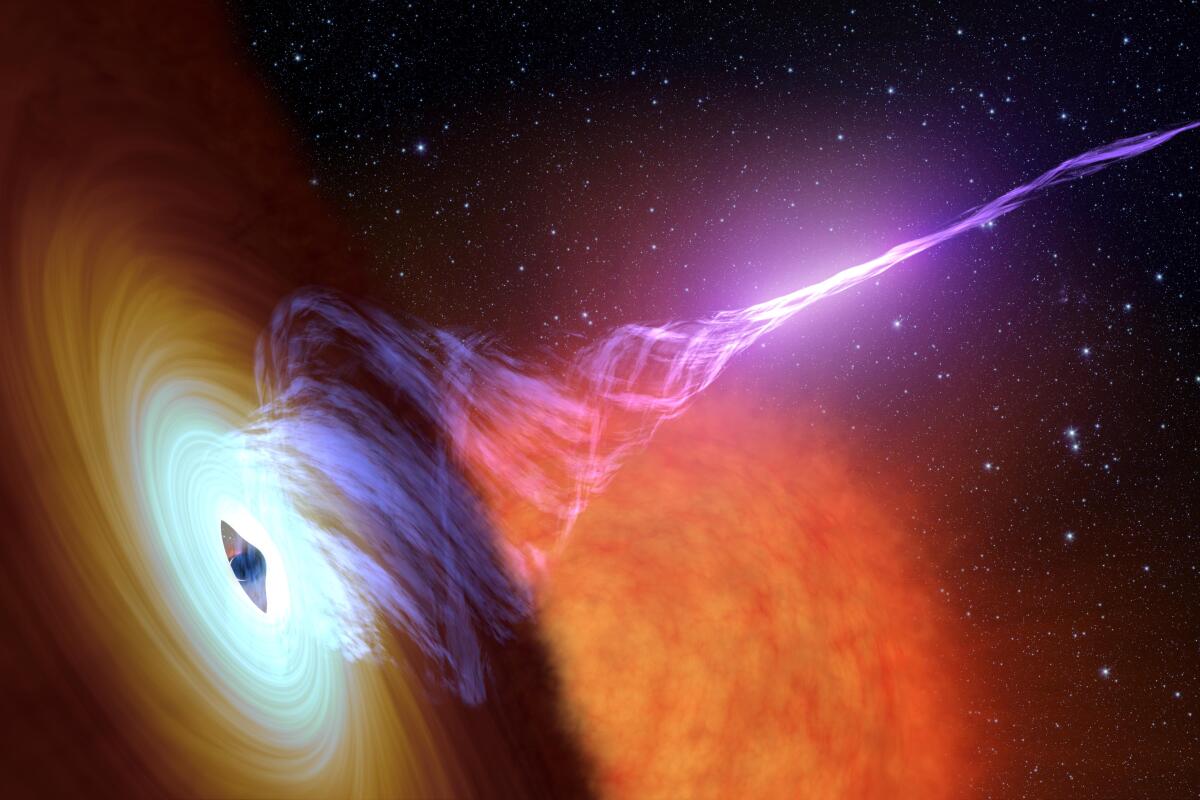Supermassive black holes have been known to belch gigantic beams of plasma into space – and now scientists have managed to recreate these fireballs in a lab at CERN.
Although black holes are famous for gobbling up anything that wanders too close, even light, they’re very messy eaters. The extreme physics going on near them hurls material all over the place, and in some cases it’s concentrated into jets of matter accelerated to almost the speed of light.
These relativistic jets, as they’re called, are thought to contain a plasma made of electrons and their antimatter equivalent, positrons. But exactly how this stuff is made, and what effects it has, is tricky to measure from astronomical observations and computer simulations.
So, CERN scientists set out to create their own versions in the lab. Using the High-Radiation to Materials (HiRadMat) facility, the team captured 300 billion protons from the Super Proton Synchrotron and blasted them onto targets made of graphite and tantalum. This sets off a cascade of particle interactions that generates enough electron-positron pairs to sustain a stable plasma state.

First, the protons smash into carbon nuclei in the graphite, with enough energy to knock loose the elementary particles inside them. Among these are neutral pions, which quickly decay into high-energy gamma rays. These gamma rays then interact with the electric field of the tantalum, which in turn produces pairs of electrons and positrons. A staggering 10 trillion electron-positron pairs were produced in this test run, more than enough to make it start behaving like an actual astrophysical plasma.
“The basic idea of these experiments is to reproduce in the laboratory the microphysics of astrophysical phenomena such as jets from black holes and neutron stars,” said Gianluca Gregori, co-author of the study. “What we know about these phenomena comes almost exclusively from astronomical observations and computer simulations, but telescopes cannot really probe the microphysics and simulations involve approximations. Laboratory experiments such as these are a bridge between these two approaches.”
The research was published in the journal Nature Communications.
Sources: CERN, University of Rochester





